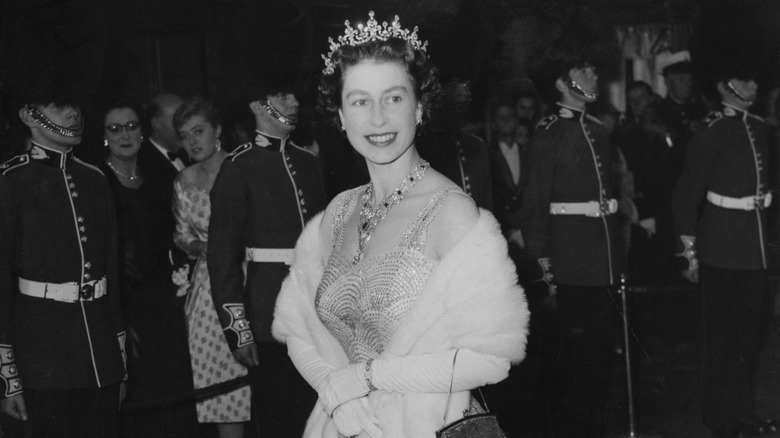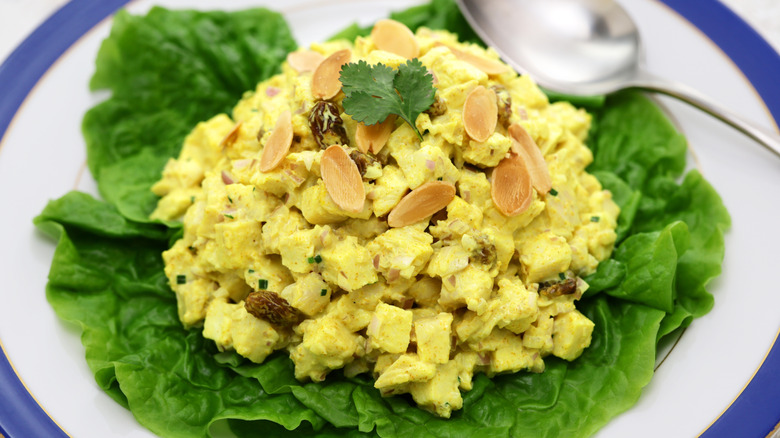The Royal Chicken Dish Invented In The 1950s For An Iconic Queen
We may receive a commission on purchases made from links.
In 1953, as Britain readied itself for the coronation of Queen Elizabeth II, the nation stood at a turning point. Wartime rationing lingered, but a renewed sense of optimism was beginning to bloom. For a celebratory luncheon honoring foreign dignitaries, the responsibility of creating a fitting menu fell to chef Rosemary Hume and floral decorator and home economist Constance Spry of Le Cordon Bleu London. From their collaboration emerged something quietly inventive: Coronation Chicken. Originally called "Poulet Reine Elizabeth," the dish embodied postwar resourcefulness and subtle elegance.
It began with poached chicken — gently simmered in a broth of water, wine, carrots, and peppercorns — served cold and dressed in a delicately spiced sauce. The sauce combined mayonnaise, tomato purée, apricot purée, red wine, lemon juice, and curry powder. Lightly whipped cream was also folded in, lending a soft richness that balanced the warmth and sweetness. The dish was accompanied by a rice salad featuring peas, chopped cucumber, and herbs in a simple vinaigrette, all arranged on elongated platters for hundreds of international guests dining in the Great Hall of Westminster School.
Coronation chicken was created to honor Queen Elizabeth II
Coronation Chicken was formally introduced to the public in 1956 with the publication of "The Constance Spry Cookery Book," co-authored by Rosemary Hume and Constance Spry. By then, it had already gained popularity in home kitchens and catering circles across Britain. The classic Coronation Chicken recipe evolved into a buffet staple, picnic favorite, and quick and easy sandwich filling.
Modern interpretations showcase the meal's adaptability. For example, some cooks lighten the base with Greek yogurt or crème fraîche. Others replace the apricot purée with mango chutney or peach preserves. Add-ins like toasted almonds, sultanas, chopped herbs, lemon zest, or chili flakes introduce new dimensions. Whether spooned over baked potatoes, stirred into pasta, or tucked into sourdough with watercress, Coronation Chicken continues to reinvent itself without losing its essence.
Despite its many variations, the original still resonates. It reflects a moment when British cuisine, shaped by austerity, cautiously began to embrace global flavors. This old-school chicken dish, created to honor a young queen at the dawn of her reign, tells the story of a nation in transition. Over 70 years later, Coronation Chicken remains a nostalgic comfort food.

